#dogbane
Explore tagged Tumblr posts
Text

you find the corpse of an angel in the desert in the form of a thousand glittering beetles
87 notes
·
View notes
Text

BUG X DOG SONA?!?!
#furry#artists on tumblr#furry art#small artist#fursona#art#digital art#furry artist#fursuit#furry community#what the dog doin#dog hybrid#bug art#bugs#dogbane beetle#dogbane#beetle#new fursona#feral furry#furry anthro#green#bug#beetle hybrid
27 notes
·
View notes
Text


Dogbane beetles on a hemp dogbane that grows in my community garden next to my tomatoes.
58 notes
·
View notes
Text
It’s 4am and I have physical therapy today but what am I doing instead of sleeping or showering? Reading Snack fic ofc😩
this ship really is a curse…🫠
#addiction is a curse kids#don’t do drugs kids#marauders era#marauders fandom#sirius black/severus snape#sirius black#Severus Snape#snirius#snack#snack hp#hp snack#starprince#dogbane#omegaverse#alpha beta omega#ao3#archive of our own#fanfiction#nom nom nom#wizarding world#wouldn’t have it any other way#cursed
14 notes
·
View notes
Text










More night flowers
#landscape#landscape photography#nature#nature photography#naturecore#photography#flowers#wildflowers#meadow#spring#beardtongue#penstemon#spiderwort#tradescantia#aster#daisy#allium#wild garlic#dogwood#cornus#dogbane#apocynum#apocynum cannabinum#clover#trifolium#milkweed#asclepias#ruellia#petunia#kentucky
28 notes
·
View notes
Text

I’m testing different methods of hemp dogbane fiber extraction! Apocynum cannabinum is a perennial plant related to milkweed that was (and still is!) used by native people across North America to make cordage. And there is a little patch of it growing right next to my house, huzzah! The jar with a red dot has some pectinase in it, the jar with a blue dot contains only water. I am so dang excited to see what kind of fiber we can obtain using different retting methods!
4 notes
·
View notes
Text
Found some sprouts of dogbane while clearing my yard this weekend. I clipped a few sprigs and used the sticky sap to reinforce my protection spells, then left the rest to grow. Dogbane is indigenous to my area and my mother-in-law (gods rest her) used to maintain a patch on her homestead. We'll be keeping this patch going if we can.
Also unlocked a memory as I was pulling up huge bundles of vetchweed and clover. When I was very young, I would sing while picking flowers because Disney movies had taught me that songs could make flowers bloom. And in my 5yo mind, I believed it would help more flowers grow if I sang to them.
Soooo I guess I've been at this magic thing longer than I thought, even if it was purely accidental at the time. 😅
Anyway, another step toward the garden I've always wanted. I'll keep you posted!
instagram
#garden#gardening#green witchcraft#plants#dogbane#Bree's Witch Garden#new tag for future updates!#Instagram
27 notes
·
View notes
Text
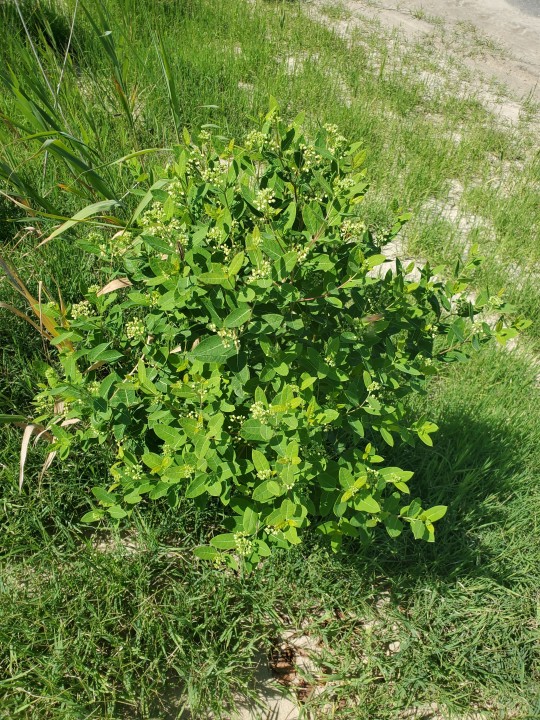
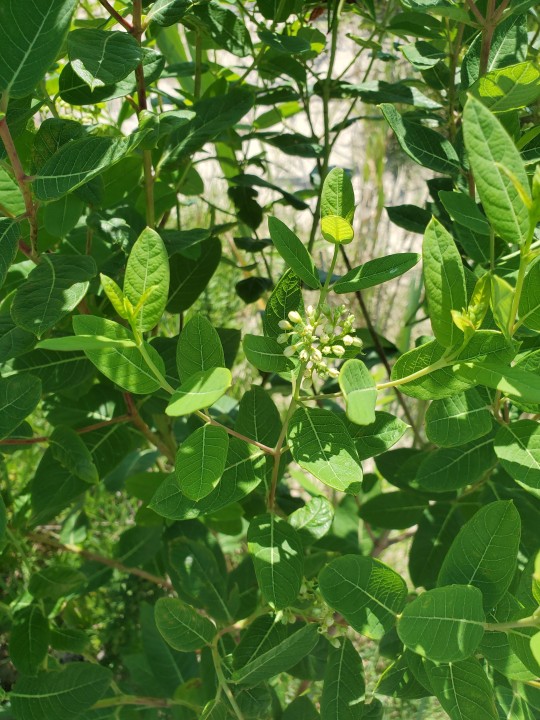
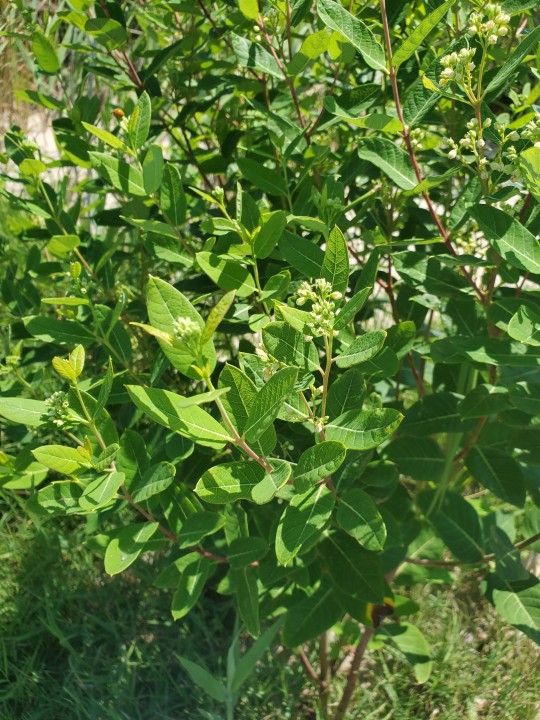

Hemp Dogbane (flowering & fruiting), Apocynum cannabinum
8 notes
·
View notes
Text
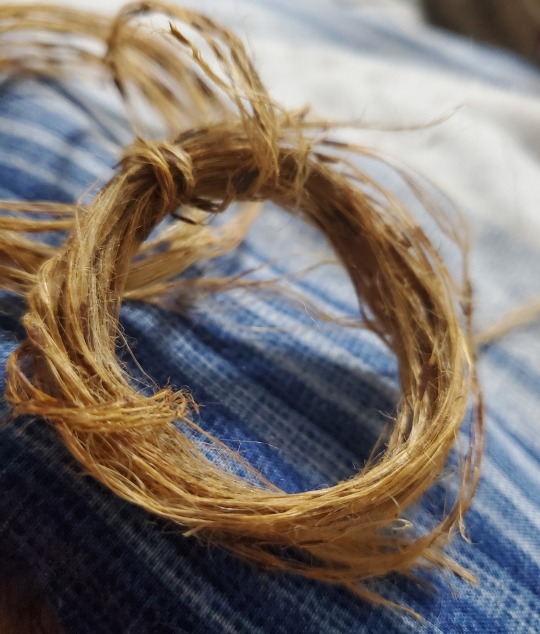
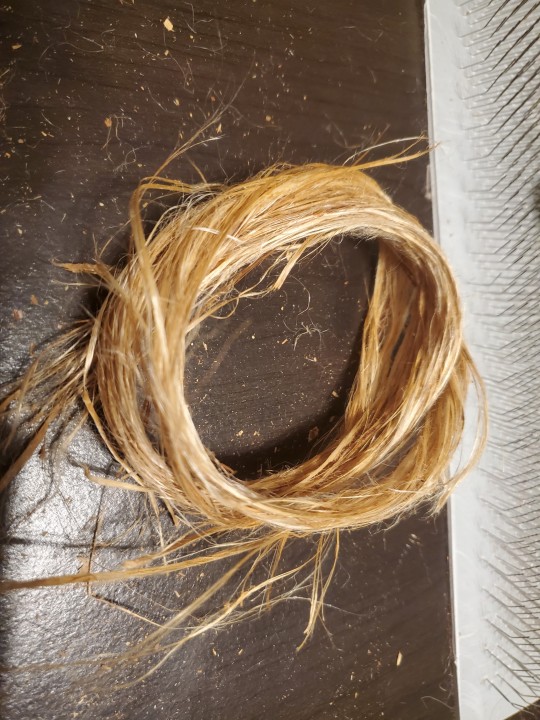





Different stages of dogbane processing. Experimenting how best to clean and separate the fibers without losing a bunch and breaking down all the long lengths. I haven't carded the most recent batch, but 1. Scraping off outer bark before splitting the fibers from the pith and 2. Cleaning them with a comb instead of going straight to cards seems to be helping. Although a big part tbh was just splitting the stalks cleanly with a knife instead of breaking apart by hand.
Insane how soft they are when carded well though--hard to find specific resources (there's some youtube on a lot of these bits but not as much for washing/post spinning processing) but wondering if it'll need boiled and beat the way flax does (from what I can tell nettle too).
Experimenting is fun but hate ruining stuff the further I get in processing. I have a good stock of stems foraged and know where to get more (although they're more at risk of being degraded this far in the season) but it does take a long time for a little. I'm having fun with it and doing small bits at a time due to caution and impatience lol but if I ever want to get as far as actually making something. I will need to actually make a lot lol.
#mostly posting to have my stuff organized somewhere. to the rest of you i am just playing with sticks#dogbane#fiber processing#idk how to tag so I'll be able to find it again lol#natural fibers#foraged fibers#foraging#bast fiber
2 notes
·
View notes
Text
"It is poisonous to humans,[5] dogs, cats, and horses.[13] All parts of the plant are toxic, and the plant contains cardiac glycosides.[5] The plant is toxic both green and dried.[14] The stems contain a white sap capable of causing skin blisters.[15]"
Tracking down the sources (5) leads to https://pfaf.org/user/Plant.aspx?LatinName=Apocynum+cannabinum, which in turn cites four sources for its toxicity at https://pfaf.org/user/cmspage.aspx?pageid=174 (1, 4, 19, 62).
Checking out one of those sources (62, from 1982), found it on Anna's archive: https://annas-archive.org/md5/3e8a8a8148cbc2c2afb4b960614a0a87 (also borrowable from IA, though it's timing out for me: https://archive.org/details/fieldguidetonort0000elia/page/282/mode/2up ).

Not exactly super helpful -__- Doing a search on Anna's Archive for just "dogbane" does give this scholarly source though: "Medical Toxicology of Natural Substances || Dogbane Family and Cardenolides" (10.1002/9780470330319.ch147) (https://annas-archive.org/md5/1e3c8186cfe91266972a50468f0fe835).
"The most commonly mentioned folk use was as an abortifacient."
(Well that's a fun side-quest; back to what/how it's poisonous)
"Common oleander contains several cardiac glycosides (oleandrin, digitoxigenin, neriantin, rosagenin) that produce a digitoxin- like effect by inhibiting the sodium - potassium adenosine triphosphatase enzyme system. These cardiac glycosides bind to an extracellular portion of the Na + /K + ATPases and cause increased intracellular calcium concentrations. Minor glycosides in oleander with limited cardiac activity include adynerigenin, adigoside, digitalin, and uzarigenin.11 Because of the lack of toxicokinetics data, the identities of the toxic glycosides or toxic metabolites remain unclear."
"Of over 400 cardiac glycosides isolated from the plant kingdom, most of the cardiac glycosides occur in extracts from the milkweed (Asclepiadaceae), figwort (Scrophulariaceae), lily (Liliaceae), and dogbane (Apocynaceae) families. The highest concentrations of cardiac glycosides are found in seed, stems, and roots, followed by the fruit and leaves. However, the leaves contain the greatest oleandrin concentrations. The concentration of oleandrin varies widely between various strains and species of oleander."
"Oleander poisoning resembles digitoxin poisoning with the predominant symptoms involving the gastrointestinal and cardiac systems. Serious oleander intoxication usually occurs following the ingestion of teas prepared from oleander leaves rather than from the ingestion of plant parts.21 – 23 The bitter taste of the oleander leaves limits the ingestion of oleander leaves in children. Characteristic features of serious oleander poisoning include confusion, marked hyperkalemia, conduction abnormalities, and ventricular arrhythmias. Nausea and vomiting usually occur within several hours, and gastrointestinal symptoms are more prominent following oleander poisoning than following digoxin toxicity. Increased salivation, dry mouth, burning of the mouth, and paraesthesias of the tongue may develop as a result of the local effects of oleander extracts.22 Case reports indicate that the astringent properties of oleander sap produce mucosal irritation.24 The most common serious complication of oleander poisoning is disruption of cardiac conduction.25 Cardiogenic shock, ventricular fibrillation, and cardiovascular collapse may occur following severe oleander toxicity. Conduction delays may persist 3– 6 days, and these cardiac effects resemble classical digitalis toxicity (e.g., conduction abnormalities with ectopy, such as supraventricular tachycardia with atrioventricular block).23,26"
Alright. So... definitely don't eat off of it, and definitely don't make tea with it (the source mentions a case where tea was purposely prepared and ingested, presumably as a suicide attempt). But assuming you aren't trying to ingest it... then sure? It's probably safe as a base for textiles? I suppose the biggest risk would be the textile getting wet and leaching cardiac glycosides, assuming that those glycosides remain in sufficient quantity after processing the stems.
"Although one leaf has been considered potentially lethal, ingestion of larger amounts is probably necessary to produce serious toxicity. Using calculations on the digoxin pharmacokinetic in the antemortem serum from a 96 - year- old woman who died after ingesting oleander tea, Osterloh et al estimated that the apparent digoxin concentration of 5.8 ng/mL was equivalent to the absorption of cardiac glycosides from 5– 15 Nerium leaves.19 The postmortem examination did not demonstrate any evidence of coronary artery disease. Using a crude oleander extract prepared by ethanol extraction, lead acetate purification, and solvent partition, the group estimated that 100 ng/mL of crude extract produced a 1 ng/mL false elevation of the digoxin concentration. Assuming the Vd of digitoxin was 1 L/kg, the estimated absorbed dose of cardiac glycosides was approximately 4 grams, which was equivalent to 5– 15 oleander leaves."
Hmmm. The leaves have greater concentrations than the stems according to the source, so... probably not a huge risk unless you're recycling water without treating it? Or perhaps during the processing of the plant, those that do the processing might consider it an occupational hazard? I mean, if you wanted to have large crops of it, then I'd imagine you'd need certain precautions when processing on an industrial scale.
I mean, at this point, I'm invested and wanna read more. @headspace-hotel, what sources do you have for "In terms of the quality and usefulness of fiber and the amount you get out of it relative to the amount of work it just blows everything else out of the water"? I figure there's a reason that cotton ended up the most used fiber of the textile industry and not any other.
Also @therobotmonster, @teeth-and-spackle, @oldmanyellsatcloud, @cryptidroots, @ilovemosss, probably several other folks that seemed interested in this that I've missed (can't scroll through the reblogs forever).
also I ended up looking at stuff about soviet agricultural experiments and apparently dogbane (Apocyonum cannabinum) was introduced to the USSR as a fiber crop plant? ???
#politics#tech#dogbane#textiles#ussr#apocyonum cannabinum#apocynum cannabinum#abortion#abortifacient#abortifacients#call me mark watney how i be doing botany for fun#botany
6K notes
·
View notes
Text


love doodling dumb shit of my dnd oc
28 notes
·
View notes
Text
Dogbane beetle stickers! 🪲✨

This design is an alcohol marker illustration inspired by the Dogbane beetle (Chrysocus auratus). These beetles feast exclusively on Dogbane plants (Apocynum spp) and their consumption of the toxic roots helps twart parasitic wasp infections!
These waterproof vinyl stickers come in one of four size ranges: small (around 2.5 inches), regular (around 3.5 inches), and large (around 4 inches). Each sticker is handmade with care and protected with an acrylic UV-protecting spray, waterproofing holographic laminate, and finally 303 aerospace protectant to provide more UV resistance. These stickers are perfect for decorating water bottles, laptops, sketchbooks, and any other surface in need of this lil critter. I painstakingly print, laminate, and cut each sticker at home and am happy to share the results with you!
#art#queer artist#shop small#small artist#beetle#beetleposting#dogbane#plantlife#shiny#iridescent#markers#illustration#copic markers#copicillustration#sticker shop#sticker club#vinyl stickers#stickers#sticker collection#disabled artist#transgender#trans man
0 notes
Text

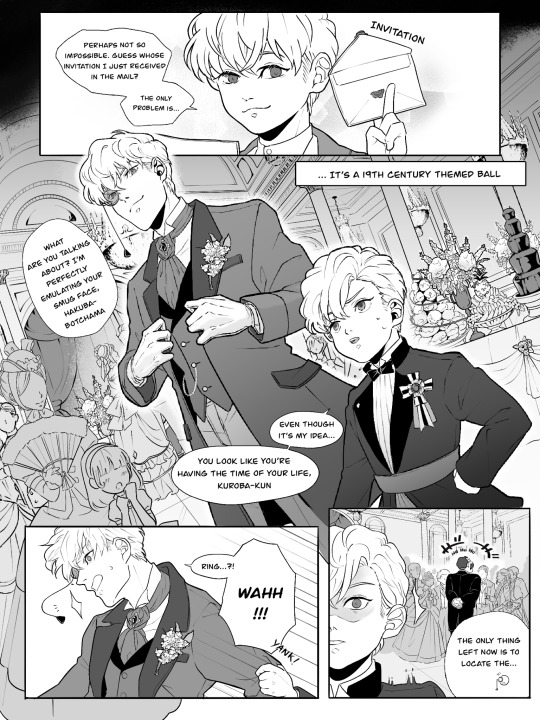

More APTX!Saguru shenanigan 😅😅😅
Aristocrat of Evil (3/3)
#aptx au#the flowers on Kaito (big Hakuba)’s button hole is dogbane#in languages of the flowers dogbane means lies and deceptions#because Kaito is pretending to be Hakuba#im probably gonna draw more of this part since Kaito pretending to be Hakuba to his father is funny#also Kuroshitsuji reference#people who spot that on my last post: i love you#i just enjoy drawing them in nice Victorian inspired clothing#should I draw an out right crossover with Ciel and Sebastian?#(yes)#hakupapa show up#dcmk#hakukai#hakuba saguru#detco#kuroba kaito#magic kaito#kaitou kid#白快#sagukai#aptx#fan comic#aptx!au#aptx4869#in the party behind them you can find profiteroles#doujinshi
427 notes
·
View notes
Text















Photos above are from a trip into the mountains yesterday. I managed to get out to Lindy Point in the Blackwater River Canyon before the overlook was swarmed with sightseers (top two photos). The rhododendron is blooming now - the drive in from Blackwater Falls State Park is magical this time of year. As it descends through the canyon, the Blackwater River transforms into turbulent whitewater, but just above the canyon, where it turns out of Canaan Valley (5th photo down), it's a gentle, serene stream perfect for floating. I also tried out some different trails in Yellow Creek Natural Area and Canaan Valley National Wildlife Refuge. The lowbush blueberries are ripening now - a sweet little snack to improve the hiking experience. :-)
#appalachia#vandalia#west virginia#allegheny mountains#blackwater river#blackwater river canyon#blackwater falls state park#yellow creek natural area#canaan valley national wildlife refuge#canaan valley#white meadowsweet#tall meadow rue#american black elderberry#common elderberry#fringed loosestrife#lowbush blueberry#swamp dewberry#spreading dogbane#bushy st. john's wort
133 notes
·
View notes
Text
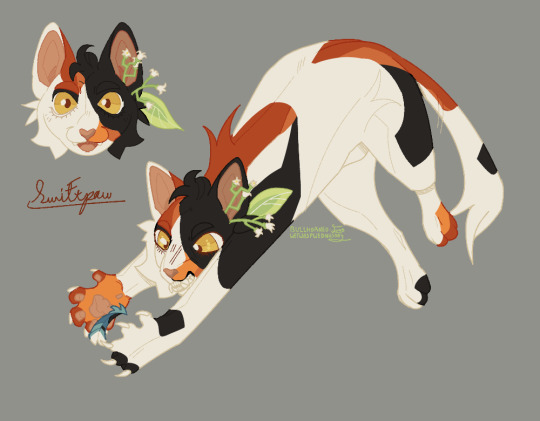
And to accompany Longtail , this boy
This is my way of saying I dont care whay the books say im making them at least kind of genetically accurate and the best way I could do that with Swiftpaw is making him a calico. So trans swiftpaw is my headcanon now have fun with that
#warriors designs#wet wasp art#warriors#warrior cats design#warriors design#warrior cats#swiftpaw#swiftkit#thunderclan#thats dogbane btw#too bad it didnt work !!!!
57 notes
·
View notes
Text

*crying emoji*
Dogbane Beetle, Chrysochus auratus
#dogbane beetle#Chrysochus auratus#insects#entomology#beetles#Coleoptera#bugs#photography#bug photography#my bug photography
58 notes
·
View notes